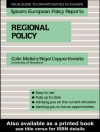‘[The text] provides by far the best introduction for students wanting to learn how to use SPSS in conducting statistical analysis. Its clear in-depth examples makes data analysis accessible to even the most numbers-phobic student.’
—Michael Burch, Eckerd College
In Pollock′s trusted IBM SPSS® workbook, students dive headfirst into actual political data and work with a software tool that prepares them not only for future political science research, but the job world as well. Students learn by doing with new guided examples, annotated screenshots, step-by-step instructions, and exercises that reflect current scholarly debates in American political behavior and comparative politics. This Sixth Edition of An IBM SPSS® Companion to Political Analysis features thoroughly revised and updated datasets and is compatible with all post-12 releases of SPSS.
Give your students the SAGE edge!
SAGE edge offers a robust online environment featuring an impressive array of free tools and resources for review, study, and further exploration, keeping both instructors and students on the cutting edge of teaching and learning.
Tabla de materias
Figures
Preface
Getting Started
Downloading the Datasets
SPSS Full and Grad Pack Versions: What Is the Difference?
Watch Screencasts from SAGE Edge
Chapter 1. Introduction to SPSS
The Data Editor
Setting Options for Variable Lists
The Viewer
Selecting, Printing, and Saving Output
How to Format an SPSS Table
Saving Commands in Syntax Files
Getting Help
Chapter 1 Exercises
Chapter 2. Descriptive Statistics
How SPSS Stores Information about Variables
Interpreting Measures of Central Tendency and Variation
Describing Nominal Variables
Describing Ordinal Variables
Using the Chart Editor to Modify Graphics
Describing Interval Variables
Obtaining Case-level Information with Case Summaries
Chapter 2 Exercises
Chapter 3: Transforming Variables
Creating Indicator Variables
Working with Variable Labels
Recoding Interval-level Variables into Simplified Categories
Simplifying an Internal-level Variable with Visual Binning
Centering or Standardizing a Numeric Variable
Using Compute to Create an Additive Index
Chapter 3 Exercises
Chapter 4. Making Comparisons
Cross-tabulation Analysis
Visualizing Cross-tabulation Analysis with a Bar Chart
Mean Comparison Analysis
Visualizing Mean Comparison Analysis with a Line Chart
Creating a Box Plot to Make Comparisons
Chapter 4 Exercises
Chapter 5. Making Controlled Comparisons
Cross-tabulation Analysis with a Control Variable
Graphing Controlled Comparisons with Categorical Dependent Variables
Mean Comparison Analysis with a Control Variable
Visualizing Controlled Mean Comparisons
Chapter 5 Exercises
Chapter 6. Making Inferences about Sample Means
Finding the 95% Confidence Interval of a Sample Mean
Testing a Hypothetical Claim about the Population Mean
Inferences about the Difference between Two Sample Means
Visualizing Mean Comparisons with Error Bars
Making Inferences about Sample Proportions
Chapter 6 Exercises
Chapter 7: Chi-square and Measures of Association
Analyzing an Ordinal-level Relationship
Analyzing an Ordinal-level Relationship with a Control Variable
Analyzing a Nominal-level Relationship
Analyzing a Nominal-level Relationship with a Control Variable
Chapter 7 Exercises
Chapter 8. Correlation and Linear Regression
Correlation Analysis
Bivariate Regression
Creating Scatterplots for Bivariate Regression Analysis
Multiple Regression
Visualizing Multiple Regression Analysis with Bubble Plots
Chapter 8 Exercises
Chapter 9. Dummy Variables and Interaction Effects
Regression with Multiple Dummy Variables
Interaction Effects in Multiple Regression
Graphing Linear Prediction Lines for Interaction Relationships
Chapter 9 Exercises
Chapter 10. Logistic Regression
Thinking about Odds, Logged Odds, and Probabilities
Estimating Logistic Regression Models
Logistic Regression with Multiple Independent Variables
Graphing Predicted Probabilities with One Independent Variable
Graphing Predicted Probabilities with Multiple Independent Variables
Chapter 10 Exercises
Chapter 11. Doing Your Own Political Analysis
Seven Doable Ideas
Importing Data into SPSS
Writing It Up
Chapter 11 Exercises
Appendix, Table A-1: Variables in the GSS Dataset in Alphabetical Order
Appendix, Table A-2: Variables in the NES Dataset in Alphabetical Order
Appendix, Table A-3: Variables in the States Dataset by Topic
Appendix, Table A-4: Variables in the World Dataset by Topic
Sobre el autor
Barry C. Edwards writes textbooks and works for Fair Trial Analysis, LLC, a company that conducts research on juries and jurors for civil and criminal litigation. He received his B.A. from Stanford University, a J.D. from New York University, and a Ph.D. from the University of Georgia. He taught survey design and analysis, research methods, and prelaw courses at the University of Central Florida and continues to teach occasional courses for the University of Georgia. His political science interests include American politics, public law, and research methods. He founded the Political Science Data Group and created the Poli Sci Data.com website. His research has been published in American Politics Research, Congress & the Presidency, Election Law Journal, Emory Law Journal, Georgia Bar Journal, Harvard Negotiation Law Review, Journal of Politics, NYU Journal of Legislation and Public Policy, Political Research Quarterly, Presidential Studies Quarterly, Public Management Review, State Politics and Policy Quarterly, and UCLA Criminal Justice Law Review.












